9 Different Types of Bird Nests and How to Spot Them
Updated: Feb. 16, 2024
Home tweet home! Learn about the many distinct types of bird nests and the different locations where you might find a bird nest.
The classic cup of woven sticks, like a robin nest, is just one of many types of bird nests. Shorebird and nightjar nests are barely present, just slight divots on the ground. Orioles construct some of the most elaborate woven baskets, which hang as pendulums from tree branches. A few species, including burrowing owls, puffins and kingfishers, nest in underground tunnels.
“Nests are little climate-controlled structures perfect for eggs and hatchlings,” says Sarah Winnicki-Smith, a Ph.D. candidate in avian evolutionary ecology at the University of Illinois Urbana-Champaign.
Check out eight different types of bird nests below and learn where various species choose to set up house.
Follow these 9 proven tips to attract nesting birds.
1. Long-Lasting Large Bird Nests
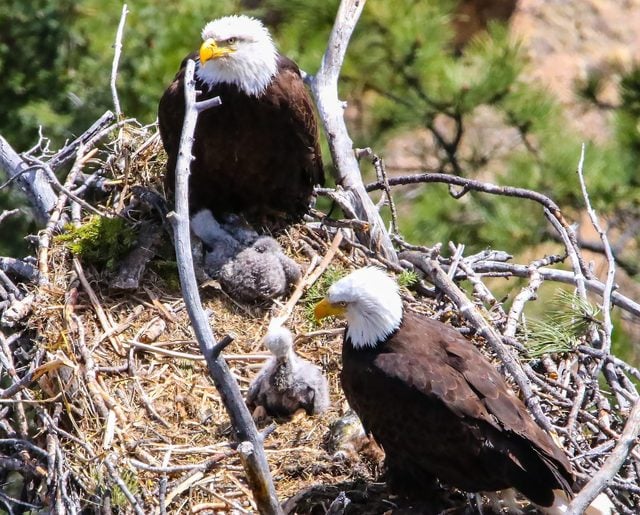
The grand champion bird nest-builder is… the bald eagle! In 1963, an eagle’s nest near St. Petersburg, Florida, was declared the largest at nearly 10 feet wide, 20 feet deep and over 4,400 pounds. That nest was extreme; most bald eagle nests are 5 to 6 feet in diameter and 2 to 4 feet tall. Nest construction can take three months. Eagles typically reuse the same nest year after year, adding to it each season.
Learn about birdscaping: Grow plants for nesting birds.
2. Flexible, Small Bird Nests
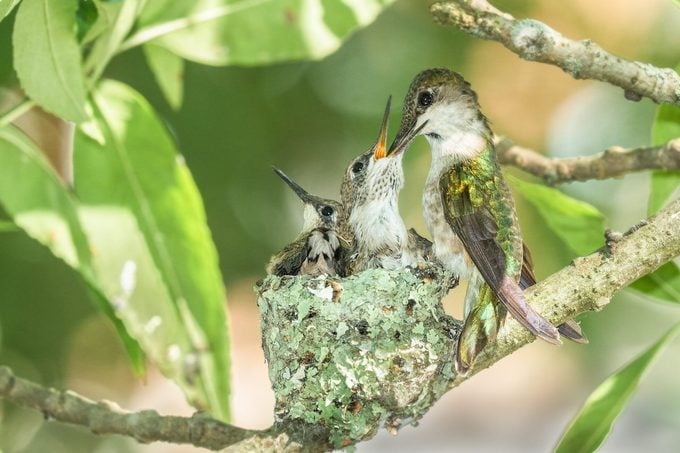
It should come as no surprise that hummingbirds, our smallest birds, make the smallest nests. Hummingbirds build nests on top of tree branches, using plants, soft materials and spider webs. Ruby-throated hummingbirds decorate theirs with flakes of lichen. Anna’s hummingbirds may lay eggs before a nest is completed, continuing to build the sidewalls during incubation. Most impressive is how these nests stretch. Female hummingbirds usually lay a pair of eggs the size of black beans inside a nest about the diameter of a quarter. As the baby hummingbirds grow, the nest expands, keeping things tight and cozy.
Learn more about hummingbird nests.
3. Oriole Nests
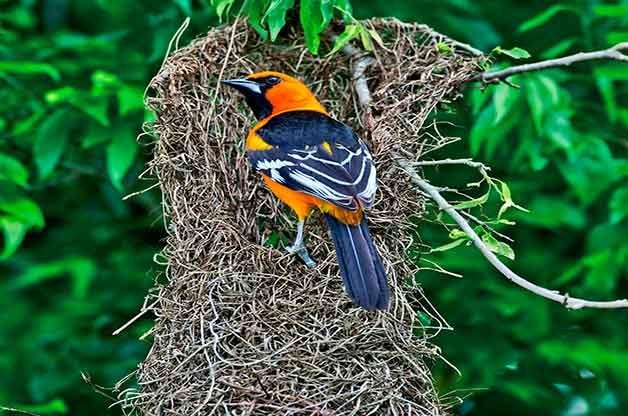
Orioles are the seamstresses of the bird world. Their iconic pendant nests dangle from outermost tree branches. Oriole nests are impossible to miss among the barren winter branches and nearly as impossible to spot, surrounded by leaves, during the breeding season. Orioles use whatever material is available to stitch their bag nests: long grasses, twine, even horsehair. The nests are lined with soft nesting material such as plant fibers, feathers or animal wool. The Altamira oriole of extreme south Texas and Central America constructs one of the longest dangling nests, which can hang down more than 2 feet.
Learn how to identify baby orioles and juvenile orioles.
4. No-Fuss Scrape Nests
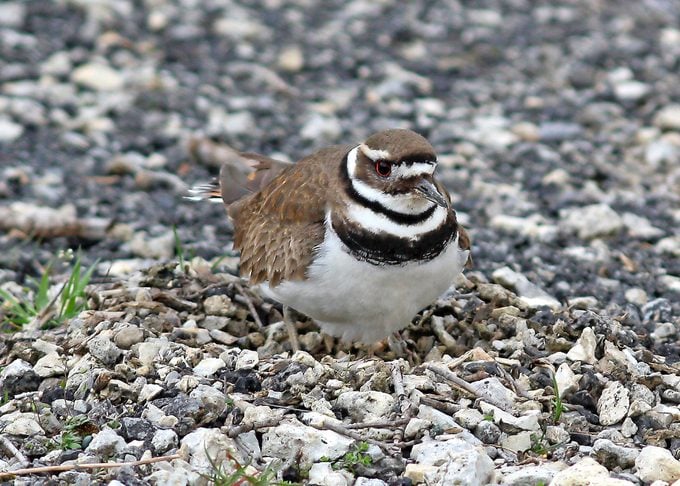
It’s the exception rather than the rule, but a few species of birds get away with building hardly any nest at all! This doesn’t mean they are haphazard in their approach to laying eggs, though. Beach nesting birds (including black skimmers, many species of terns, and piping, Wilson’s and other plovers) lay eggs in shallow depressions scraped out in the sand. Killdeer opt for no-fuss nests by laying eggs in the open, usually on gravel or dirt, before adding sticks, rocks or other natural elements. The remarkable thing about the eggs of these species is their cryptic camouflage coloration. Eggs are often speckles and match the sandy granules of the makeshift nests. Sometimes these birds will line the shallow scrape with shells or sand to add to the camouflage. As beaches get more developed, some of these beach nesters have adapted to laying eggs on nearby rooftops.
Learn about mourning dove nests.
5. Precarious Cliffside Nests
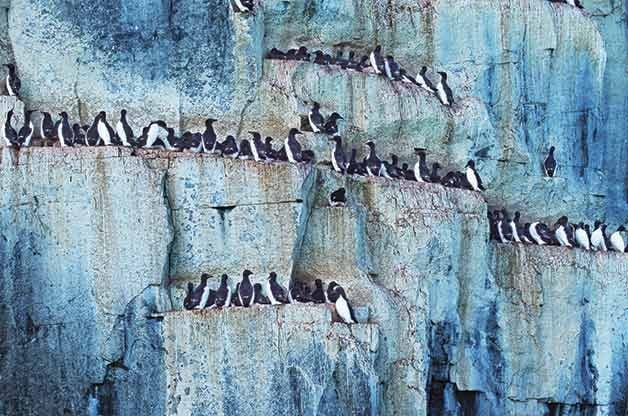
Huge colonies of murres and guillemots nest on rocky coastal cliffs. Most lack any structural types of bird nests, instead laying eggs that are extra pointy on one end. This shape helps the eggs pivot around the point instead of rolling over the edge. These ledge nesting sites are also more protected from predators. Cliff nesters aren’t found only on coasts. Lots of species, including condors, ravens and falcons, use cliffs, but they build stick nests in the crevices.
When do bluebirds nest and lay eggs?
6. Floating Nests
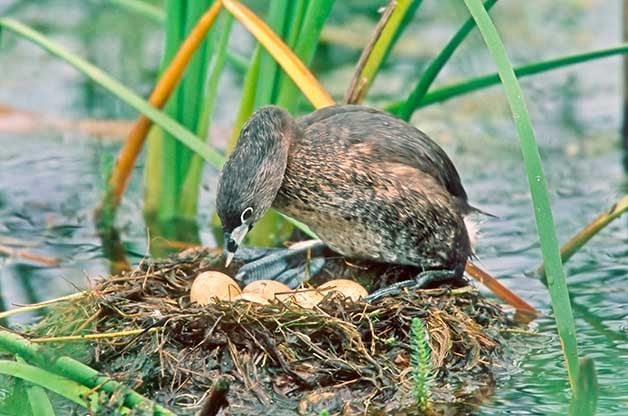
Some waterbirds, including many ducks, nest in upland grasslands far from water. Others, such as loons, grebes, coots and gallinules, nest directly on top of the water. Eggs will sink, so the birds build floating platform nests out of cattails, reeds, other aquatic vegetation, or mud. They anchor the nests to emergent vegetation to conceal them and to keep them from drifting away.
Discover more interesting facts about bird nests.
7. Underground Bird Nests
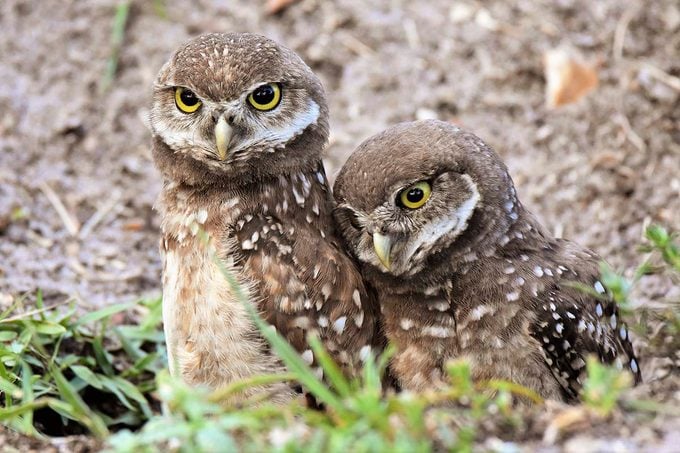
Underground types of bird nests are called burrows. Burrowing owls in Florida will sometimes dig their own burrow, while the burrowing owls in the west usually rely on spots excavated by prairie dogs, badgers, tortoises or other diggers. Other underground nesters include bank swallows, belted kingfishers and Atlantic puffins.
Find out more about burrowing and ground nesting birds.
8. Early Bird Nest
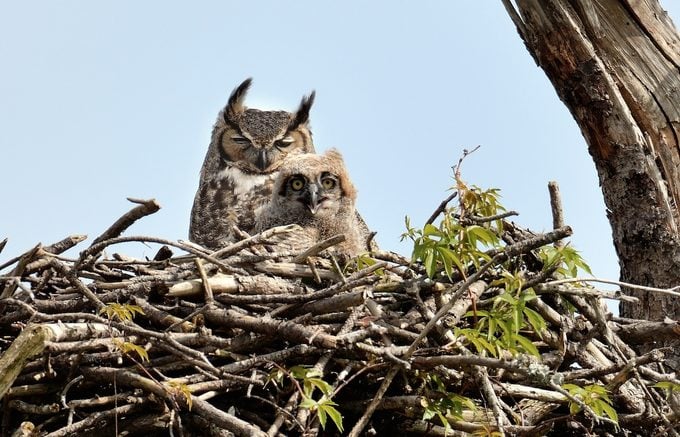
It is hard to say officially whoooo lays the first eggs each year, but my pick for my favorite bird nests is the great horned owl. Sure, many species can begin nesting in January in southern states, but it is still winter in the northern states when great horned owls start incubating their eggs in nests made of sticks, often in trees. It’s essential that these owls get an early start on nesting, because the species is slow to hatch and fledge. It is remarkable to think of the owls sitting on eggs as snow piles up during frigid nights.
Learn how to attract owls to nest in your backyard.
9. Cavity Bird Nests
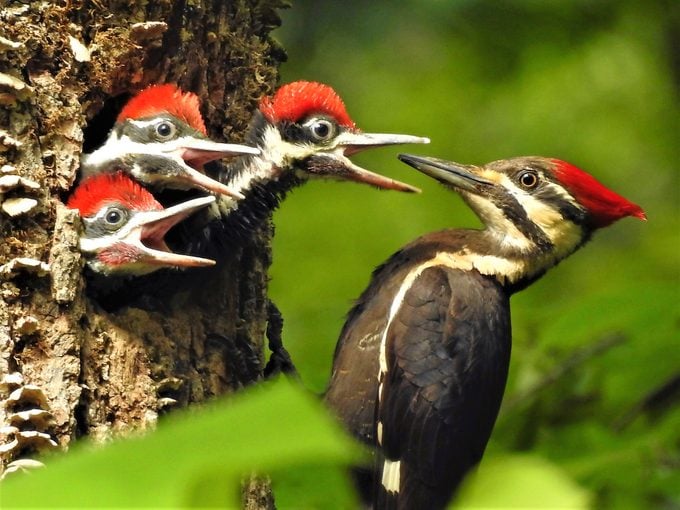
Primary cavity nesters, such as woodpeckers, excavate holes in trees and cacti for nesting. Secondary cavity nesters, such as bluebirds, chickadees and tree swallows, use these holes or set up housekeeping in birdhouses. Learn how to build a DIY bluebird house.
